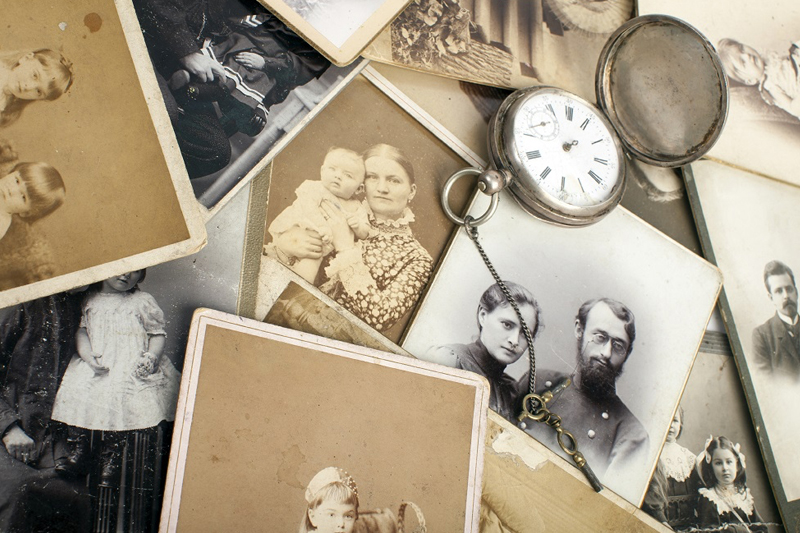Do you want to know about your ancestry?
Standing in line at Staples last week, I noticed two blue leatherbound books on the counter. A gentleman said, “Those are mine. They are my family’s history.”
Intrigued, I asked him how long it took to complete the project. “Two years. I worked every weekday from 9 until noon. It was my retirement project and a gift to my family.”
Every family has a least one historian, someone who is willing to spend countless hours delving into the past. On my husband’s side of the family, our historians are his cousins Larry Hurt and his wife Mary.
Mary explains, “The seeds for my interest in family history were planted by one of my grandmothers and two aunts. We didn’t live near any of our extended family, so personal visits were few. All of these women were letter writers and would often mention people in the family. Finally retirement came and we had the time to take trips to libraries, and visit archives and courthouses, and spend late nights researching on the computer. The more we found, the more questions we had. It’s fascinating, addicting, and time-consuming.”
Larry suggests historians shouldn’t “wait until you have time, because much information can be lost with the death of a parent, grandparent, aunt and uncle. Identification of ancestors becomes progressively more difficult the farther back you go in generations because records did not exist or were lost.”
Some people use websites such as Ancestry.com or AncestryDNA to learn specifics about their geographic roots. You can order a kit on Amazon.com from AncestryDNA for $99 or a kit from 23andMe which costs $199. Lydia Ramsey wrote an article about her experiences with both sites in Business Insider (March 31, 2016). When her kit arrived in the mail, she read the instructions about spitting into a tube. Ramsey complains, “Generating enough spit for the collection process which helps ensure the company has enough DNA to run it a second time in case of errors can be hard work.”
In six weeks she got the results. “Apart from a trace 1 percent of DNA from Asia, roughly 99 percent of my genes suggested European roots, particularly from the Scandinavian countries of Norway and Sweden. By my own rough calculations, I should be 50 percent Norwegian and at least 37.5 percent Swedish, so the results weren’t super surprising to me.”
In the headlines March 2015, there was a story in theguardian about sisters who were separated 40 years ago in Korea. They met while working at the same hospital, and after sharing using DNA testing, they were reunited. A documentary is in the making.
Just this past March, there was a story about twins finding one another through the site Twin Strangers, which is dedicated to helping people find their identical twins. Maddy found Amber because of genetic testing.
I don’t think I have any family that I don’t know about. When I told a friend I was writing about this topic, she said, “Be careful what you wish for.” Apparently last Christmas a cousin surprised her whole family with a lovely scroll sketched with a family tree. Turns out Grandpa had several children with another woman, and the conversation at the dinner table was muted. More bourbon was added to the eggnog.
Retirees, like the man in Staples, have ample time to write their history or to spit into a tube.
Any of my readers care to share experiences? Write to me.






















































